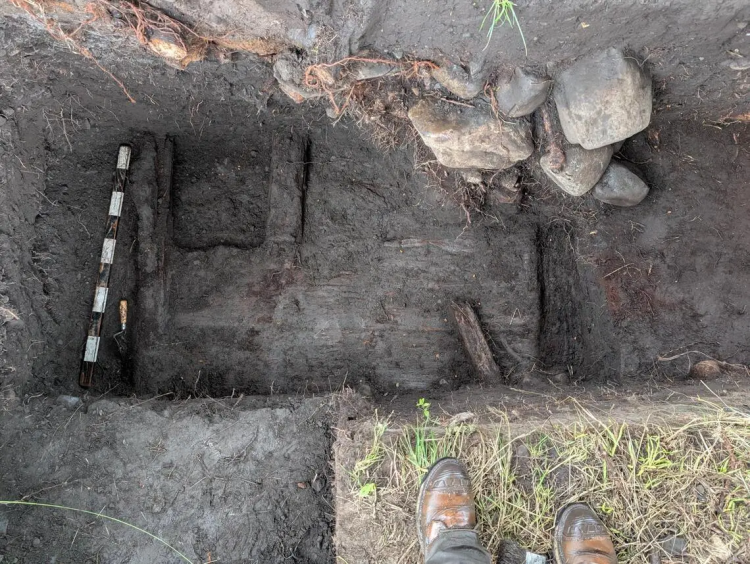Dr. Lindsay Amundsen-Meyer, PhD, an assistant professor in the Department of Anthropology and Archaeology in the Faculty of Arts, conducted a four-week excavation of the site in July 2025, where the Ware family lived circa 1888-1902, after an initial three-day dig in the summer of 2024.
The big discovery this year was the well-preserved, intact structural remains of the Ware home, including floorboards and the cellar. Additionally, Amundsen-Meyer and her team unearthed many items that clearly belonged to the Wares.

The intact and well-preserved structural remains of the Ware home, including the floorboards and the cellar. Photo Credit: Lindsay Amundsen-Meyer, Faculty of Arts
"We found a number of belongings clearly associated with the Wares in a well-dated layer," Amundsen-Meyer says. "We have lots of dated items like square nails - pre-1900 - an ink bottle that's from 1895 to 1930, and a suspender clip that is from 1881."
John Ware was among Alberta's first non-white settlers. The Black cowboy, born between 1845 and 1850 in the southern United States, followed fortune and cattle herds north from Texas to Canada.
Compelling details from the past emerge
Amundsen-Meyer hopes these items can help piece together the everyday life of the Ware family. Few contemporary accounts exist of Ware in his lifetime, and not much is known about the daily life of the man who lived on the ranch with his wife, Mildred, and their four children.
There were two interesting findings that emerged from this year's dig, according to Amundsen-Meyer.
The first was the discovery of items that suggest a level of affluence that had not been attributed to the Wares before.
Secondly, there was the discovery of items that belonged specifically to Mildred Ware, including a sewing thimble.
"Archaeology often ignores women and children," explains Amundsen-Meyer. "Finding items that are clearly associated with Mildred will allow us to talk more about her and how she adapted to life out on the prairies after coming from a fairly well-to-do family in Toronto."
Video Credit: Tim Lee, Faculty of Arts
Plans for future digs
All the items found at the site will be stored at the Royal Alberta Museum in Edmonton. In addition, a conservator with the museum is helping the excavation team preserve the structural remains in place for when they return next year.
Amundsen-Meyer says in 2026 they will open the ground around the remains to try and fully expose it and see how it was built. She says the house seems to have been built differently than other houses of the era, as the cellar was lined with wood.
Amundsen-Meyer says she is excited to return to the site for two more years, as not much archaeology has been done on Black heritage sites in Western Canada.
"This work is unique and new," says Amundsen-Meyer. "Continued archaeological excavation at the Ware homestead can help counter the narratives that there was no historical Black presence on the prairies."











